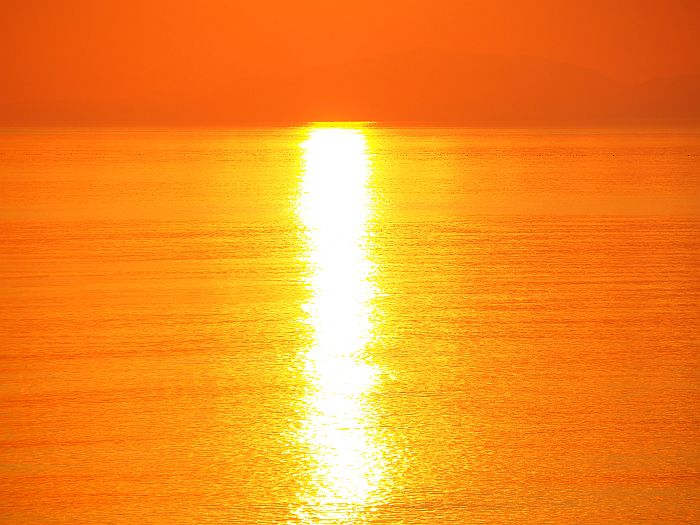
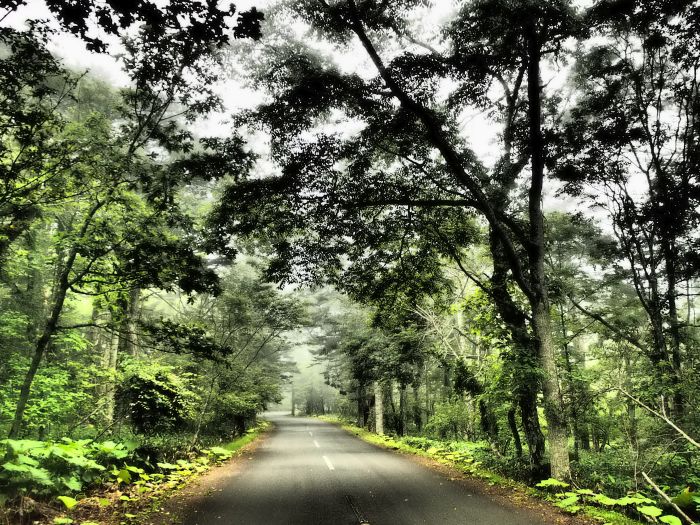
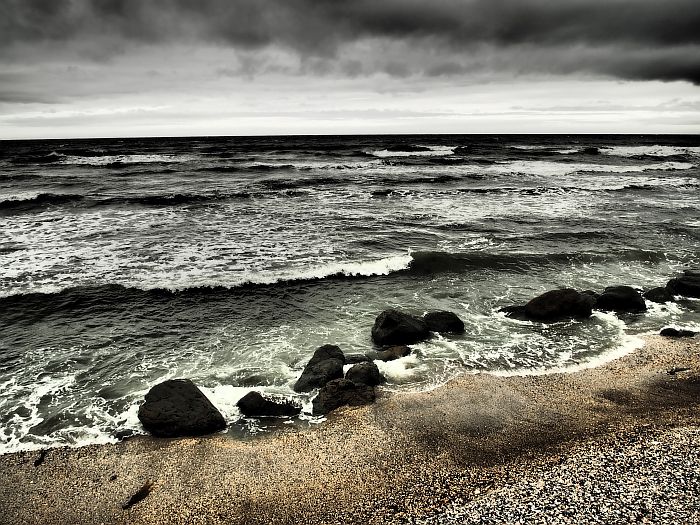
At the port in Wakkanai, on the northern tip of the northernmost Japanese island of Hokkaido, my entire bike was disinfected and my bags were thoroughly washed before I was allowed to take it off the boat.
I would be allowed to stay 90 days in Japan. If I wanted to, I could also extend the length of the stay by as much as 90 more days. Thus, I decided to allow myself plenty of time and reduce the stress factor somewhat.
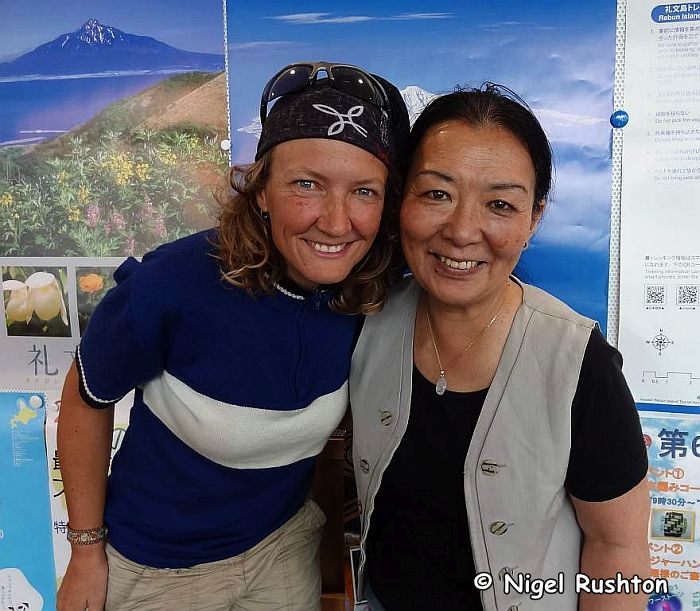
My first impression was that the Japanese people are “friendly” and I was surprised that unbelievably loving people surrounded me. I found them to be warm, considerate and truly pleasant.
It’s a real pleasure to go into a shop and to experience the manner in which I was greeted. Each and every customer is personally greeted with a very long sentence and they are also bade farewell with an equally nice bow and with as much warmth and detail as when they were greeted.
Within a short time I meet a lot of other Westerners. Well, that is, I met about 5 people, but for me it seemed like many, considering that there were also times when I met no foreigners at all for months.
A Kiwi, Nigel, who had already cycled a few times in Japan, provided me with the first information about the country.
A Swiss motorcyclist, who had already been on tour for seven years, could not become especially inspired about Japan, however, and he didn’t want to converse with me for long.
I found that a bit strange. I’m always happy when I can enjoy a good conversation. So I couldn’t imagine that he would have many people to talk with.
Well, I guess everyone is different.
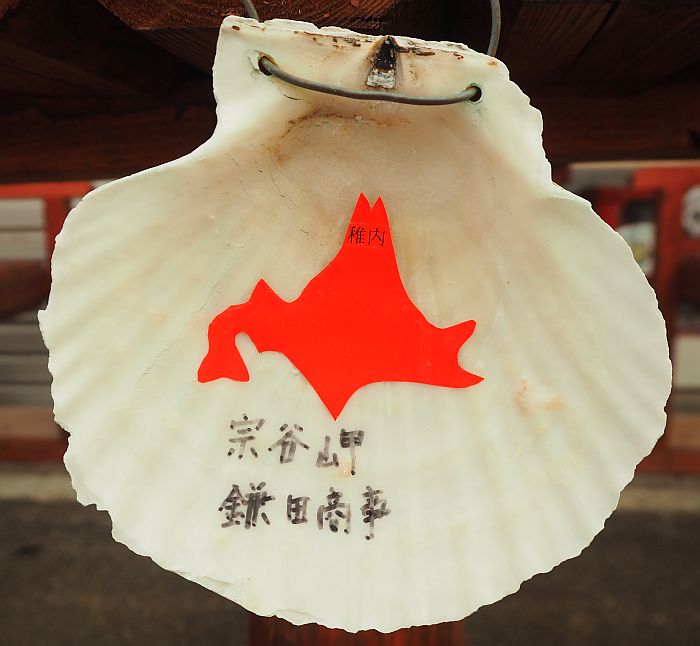
Getting money was not quite as simple. Unfortunately, my bank card was accepted only
at the 7-Eleven shop ATMs. The nearest 7-Eleven was located 250 kilometers away.
I counted myself lucky when a friendly Japanese couple was willing to exchange some
US Dollars into Japanese Yen for me.

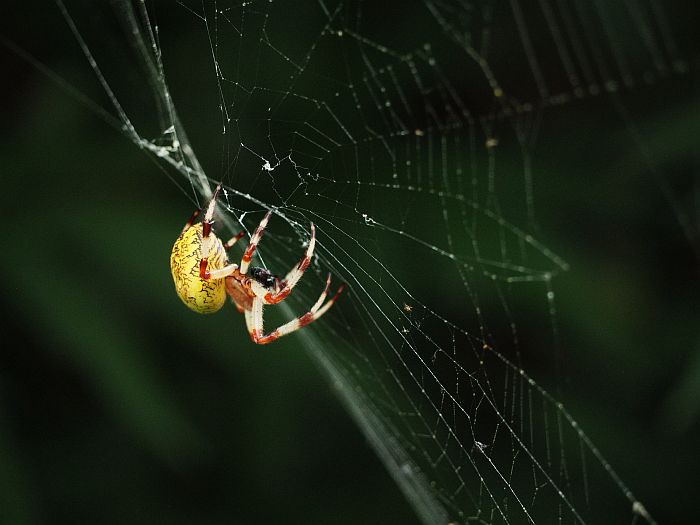
The first night I was a bit unlucky. My tent was already pitched and standing for a while at a nice campsite, but when I finally wanted to go to sleep, I discovered that my entire inner tent was inhabited by fat wood ants.
So, in the middle of the night, I had to pack everything out of the tent again. I shook out my stuff and carried my tent back and forth until I could eventually go to bed.
How they had gotten into the tent remains a mystery to me.
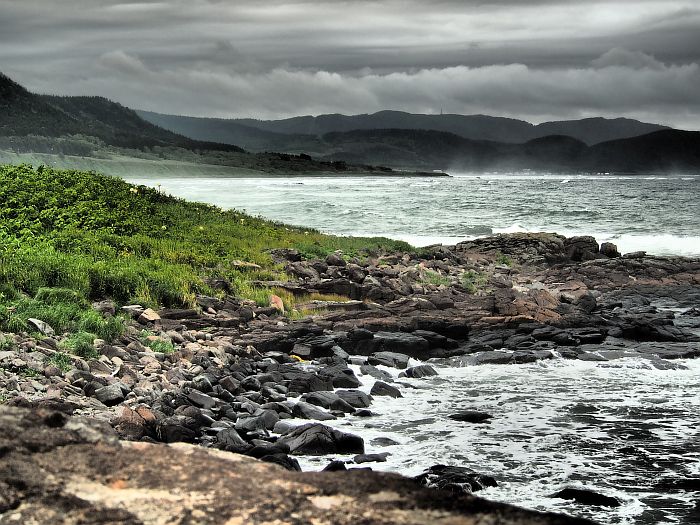
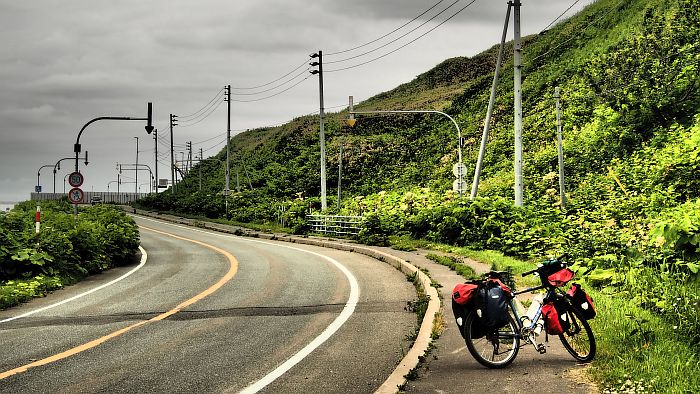
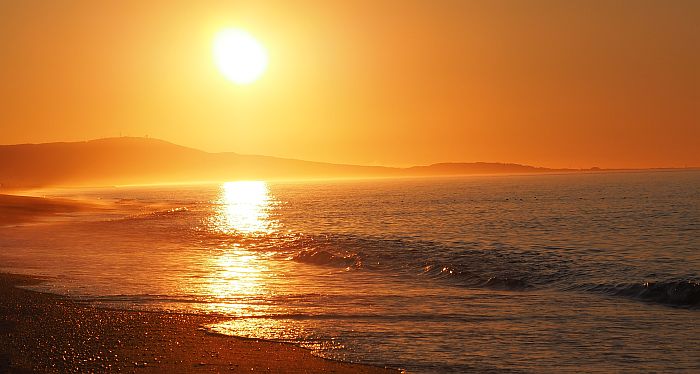
The next morning, I pedaled hugging the coast along the north-eastern tip of Hokkaido. Magnificent scenery sweetened the next day for me. There was hardly any traffic and the drivers were always very considerate when they passed me leaving plenty of space between us.
It was a stress-free and very pleasant ride.

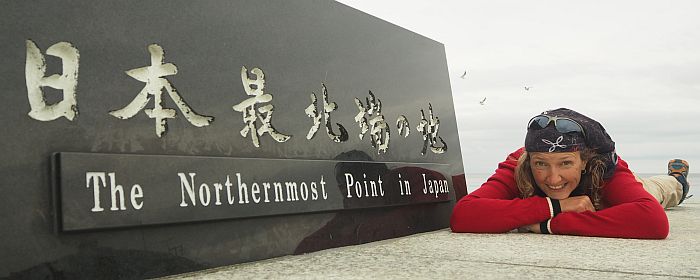
On Cape Soya, I was camping that night beside the outhouse when it began to storm. It was so violent that I couldn’t sleep half the night because one side of the tent was constantly being whipped around forcefully.
It was so loud in the tent that I was afraid it might rip open, even though all my guy lines were stretched taut.
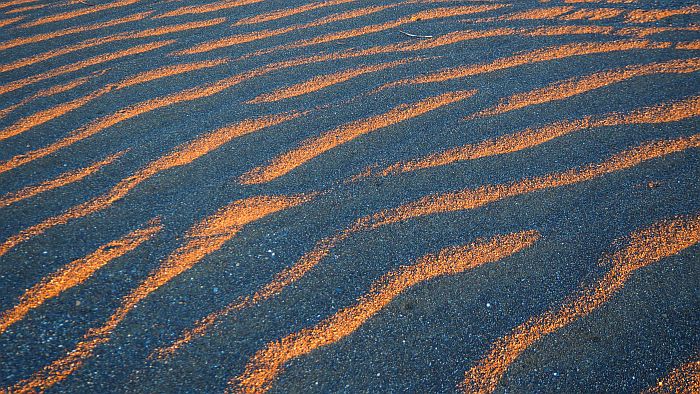
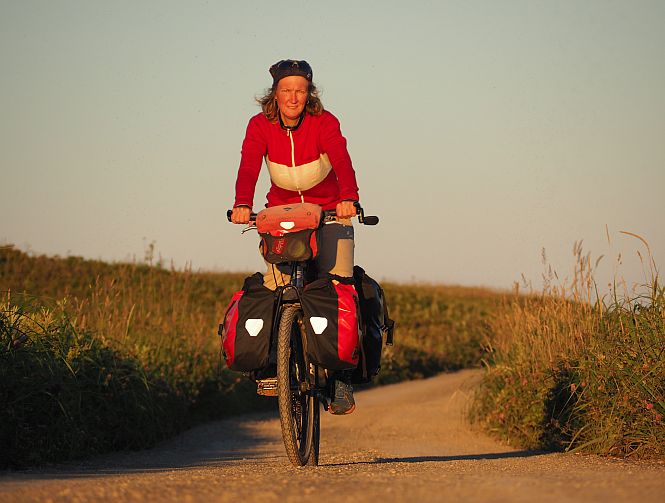
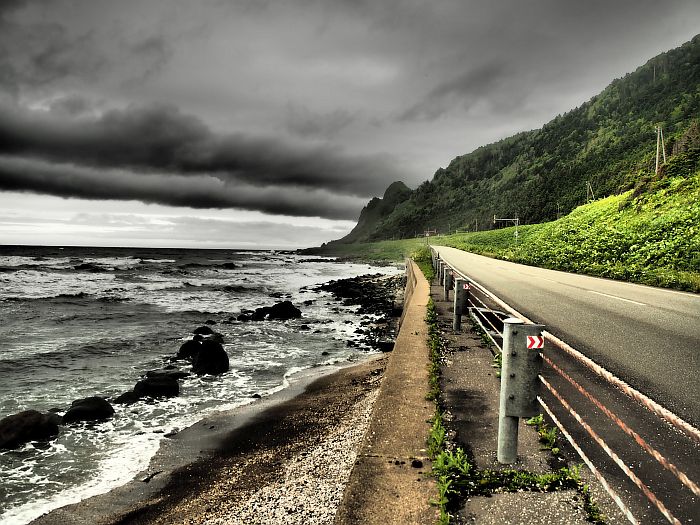
The ocean bays were just gorgeous and they were empty with not a single soul in sight. Deer and foxes crossed the road several times and I met cyclists from all over the world.
It was simply fantastic.
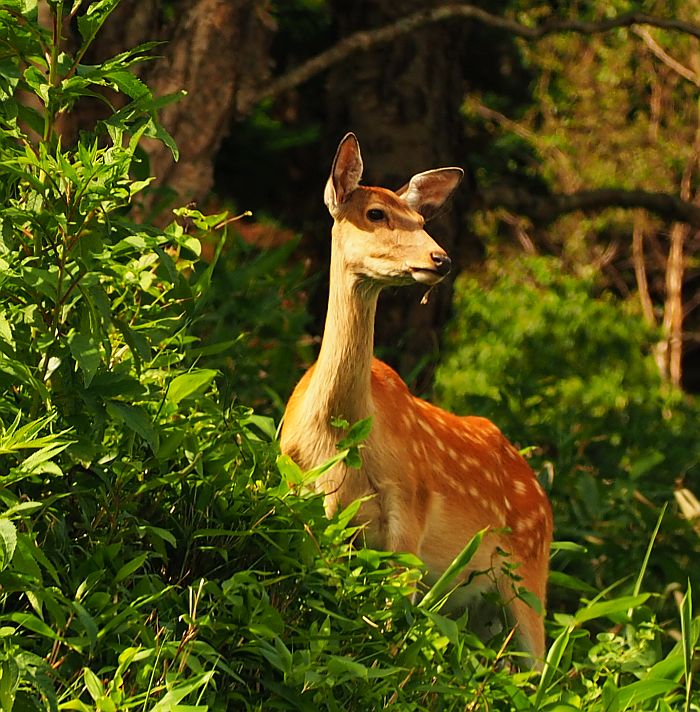
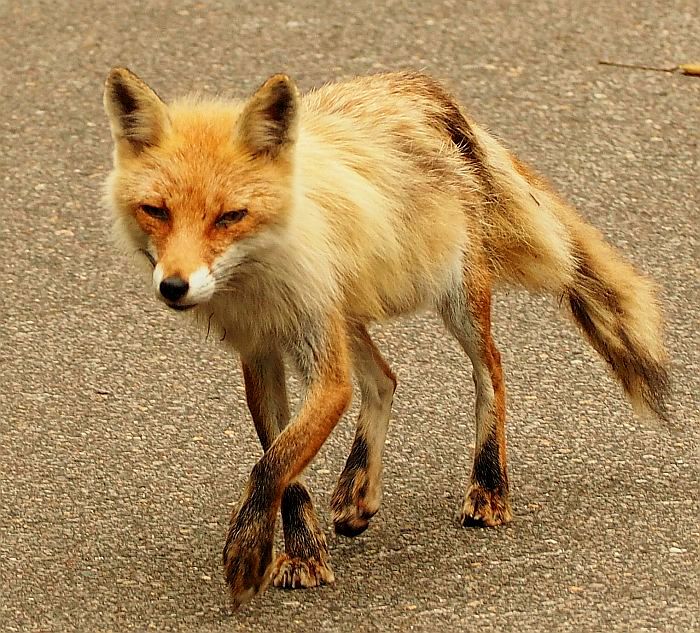
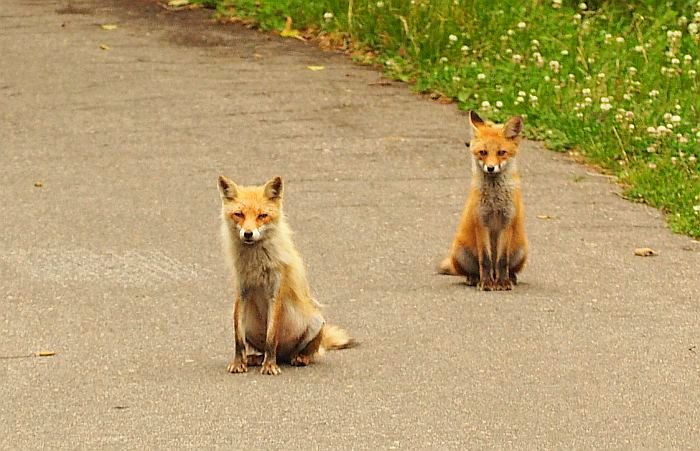
Birds inhabit Hokkaido in vast quantities and in all sizes and colors. Birds of prey circled
repeatedly overhead making their rounds. And I saw countless cranes and herons.
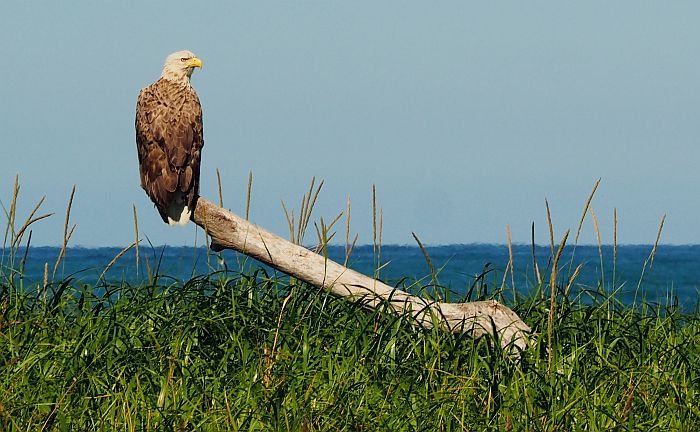
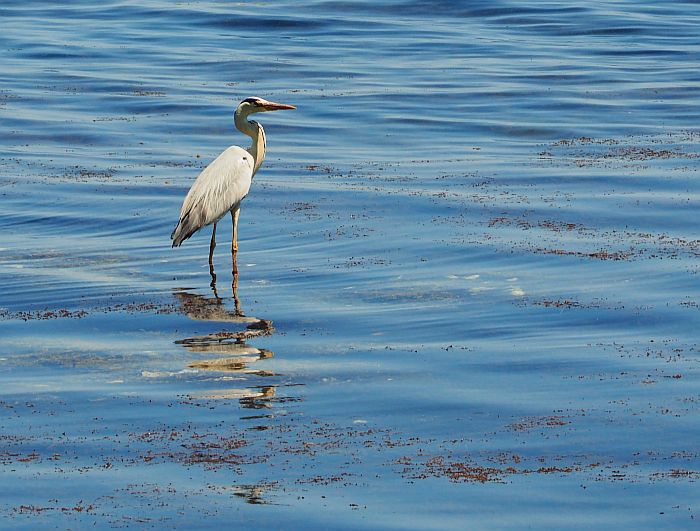
Crows woke me up every morning just after sunrise. The fact that Japan has no daylight saving time – the sun is rising in July already by 4 a.m. – too early to have to listen to the raspy crowing every morning.
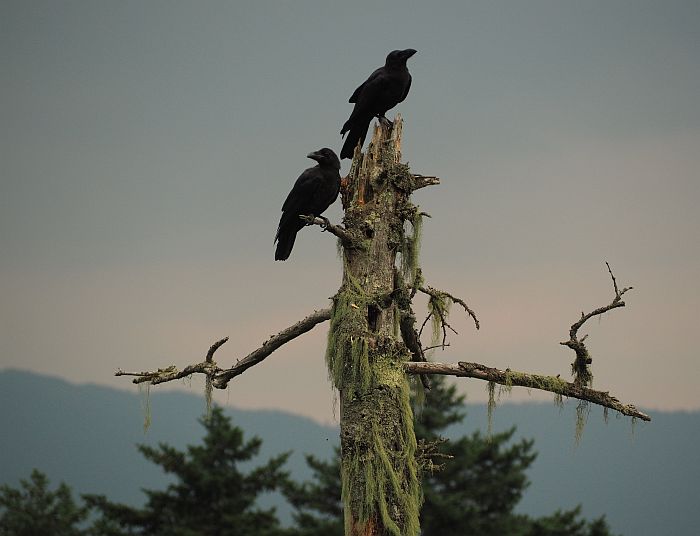
There are many places to camp that are cost-free, so life is not really more expensive there than anywhere else. Since many things are less expensive than in Germany, it is possible for me to make ends meet very well.
Unfortunately, fruit and vegetables are not cheap, but if you look around, there are also plenty of bargains to find.
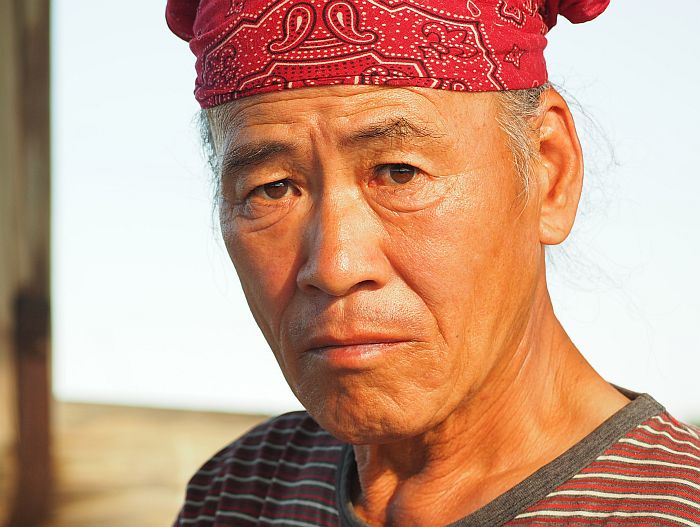

I met a very amiable camping van driver, who invited me to eat sushi with him. It was really exciting to watch him as he prepared everything. He prepared the sushi with so much devotion that I could hardly wait to eat it.
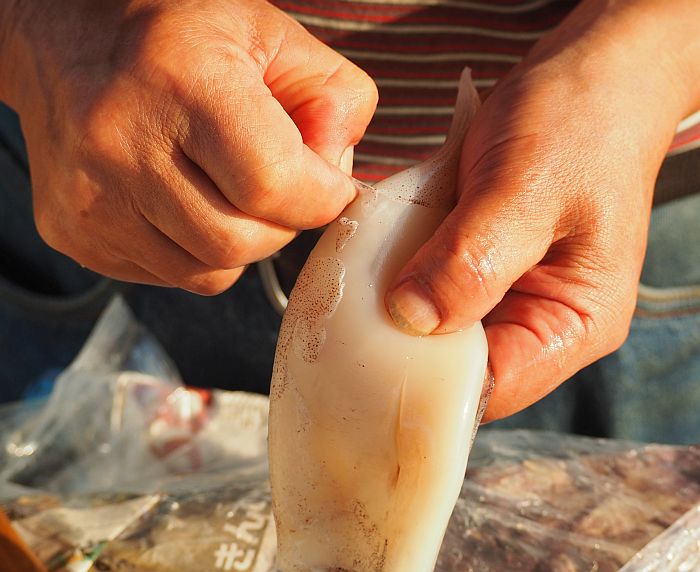

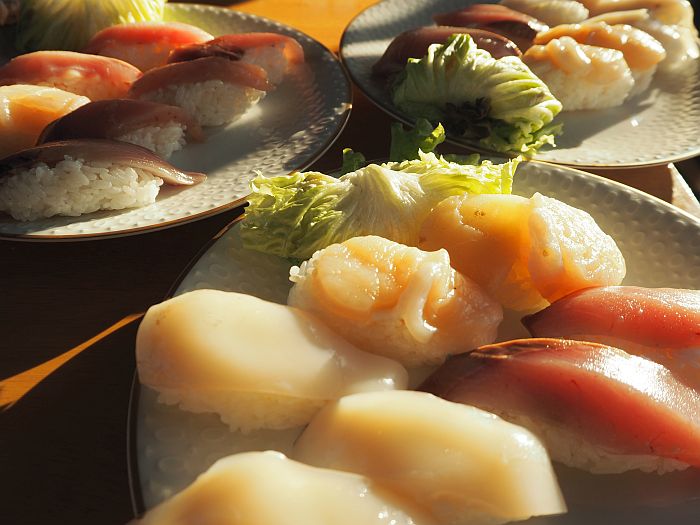
He carefully decorated the table in his camper with style and I enjoyed the tastiest sushi of my entire life.
The next morning, he followed me with his van and then brought me some rice and a baked omelet for breakfast.
The Japanese people love to give gifts. Again and again I would receive something as a gift from them. Sometimes they gave me candy, or drinks, or just any treat, even though I had never seen them or spoken with them before.
Especially among campers, they seem to be overly generous. Several times in the morning, people brought breakfast to my tent for me; sometimes I was even invited to dinner immediately when I arrived.
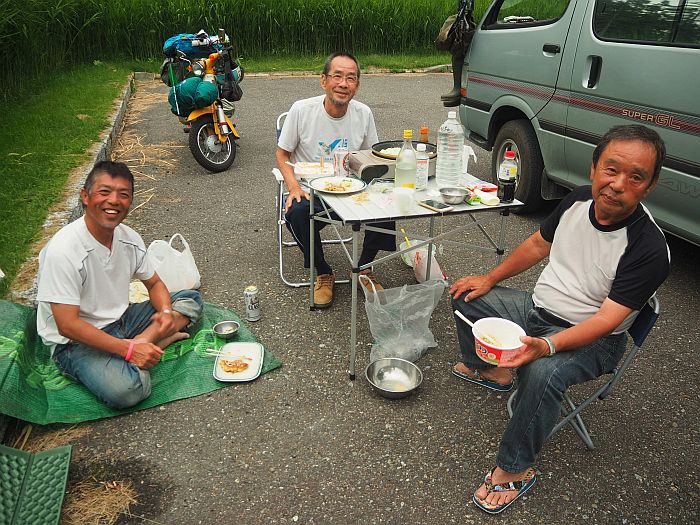
Once, I found a plastic bag filled with candy on my bicycle when I returned from the toilet, but I never saw the people who did it.
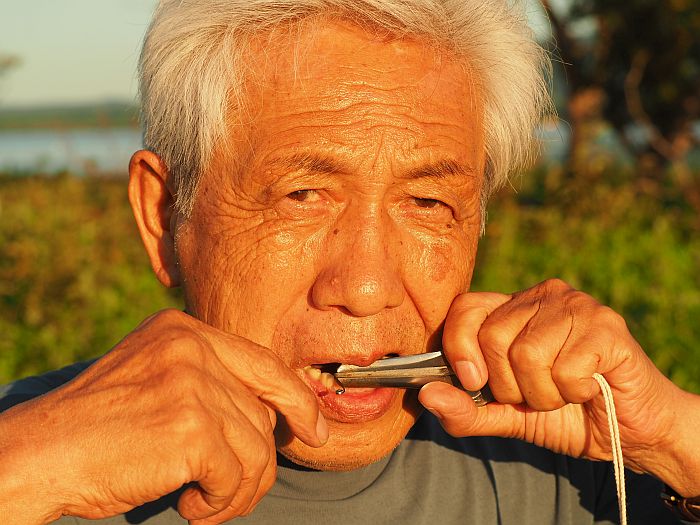
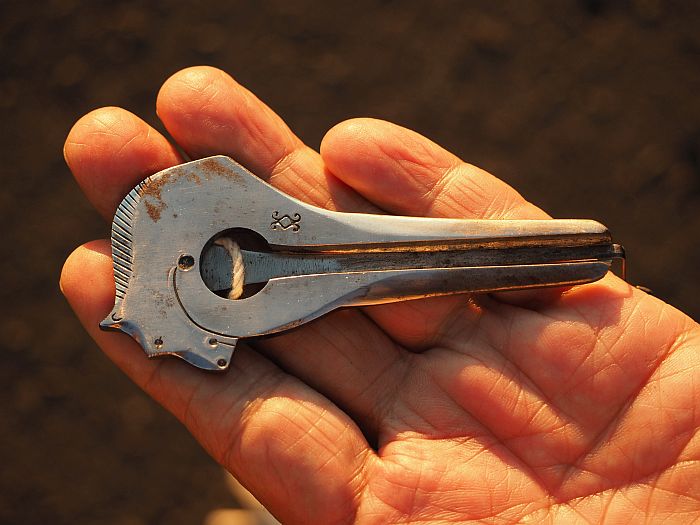
What a difference to the Russians! I could breathe freely. It’s just an indescribably wonderful feeling when you know you are welcome, even when it was sometimes very difficult to communicate.
The Japanese are very shy people and they have to make a real effort to get by in English. Regardless, some of them were curious and they would come up to me and ask me where I came from and what I was doing.
But, unfortunately, understanding each other is often very limited, something which I always find very sad.
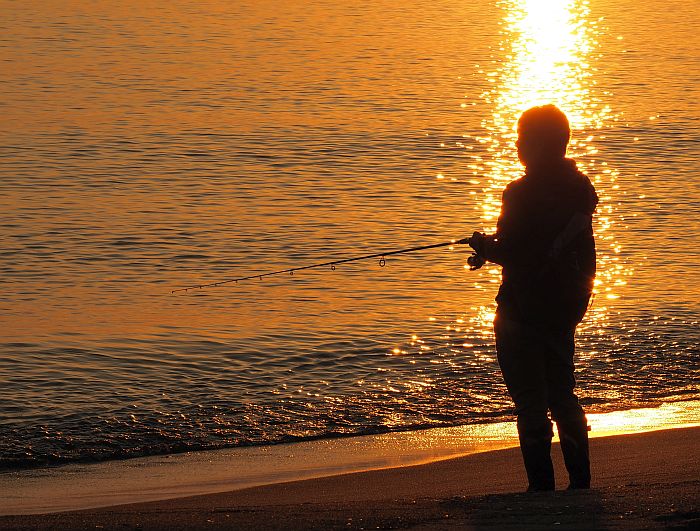
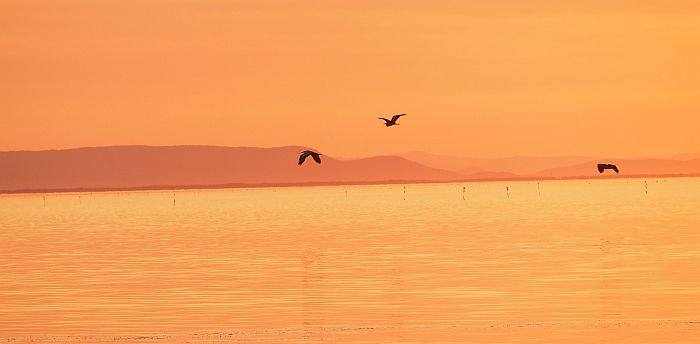
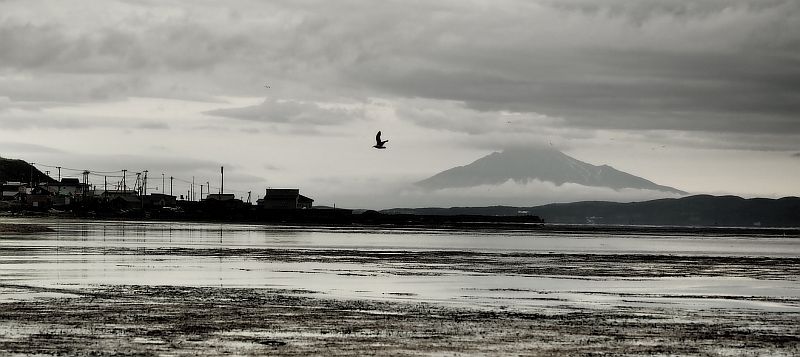
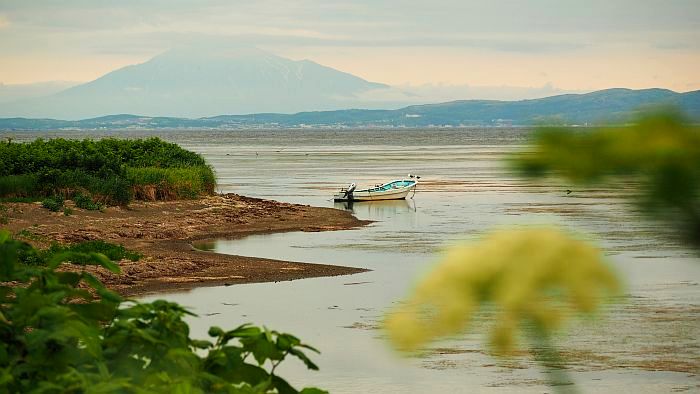
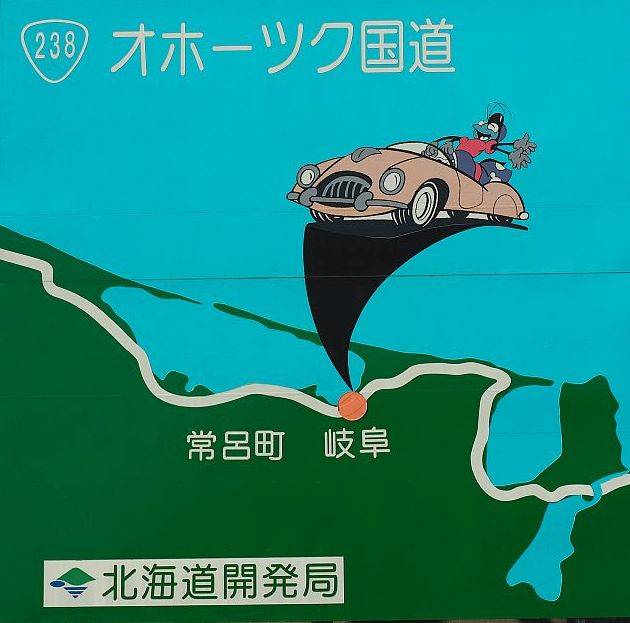
The coast road continued to be stunningly beautiful and the sunrises and sunsets were absolutely breathtaking.
The “Land of the Rising Sun” clearly didn’t get its name by chance; it truly fits the picture well.
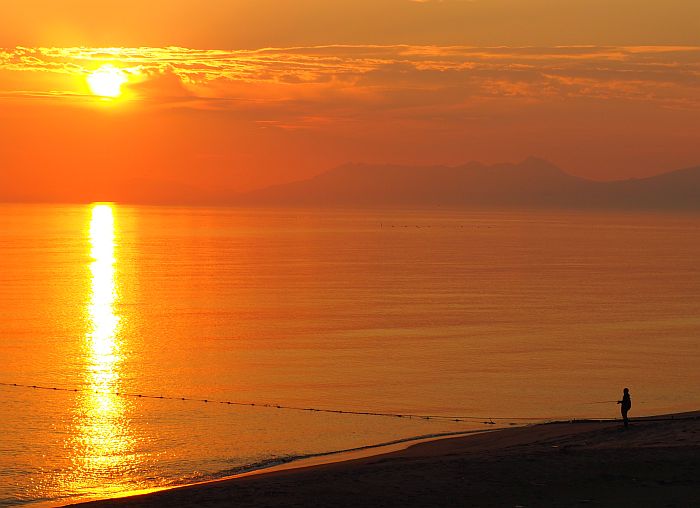

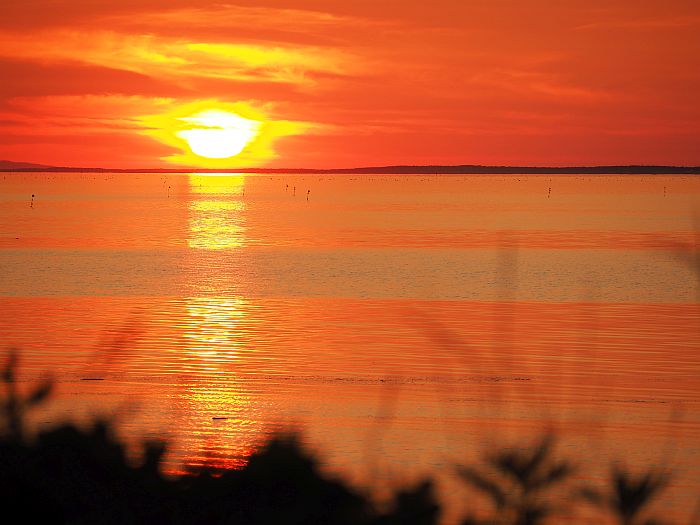
Onsen. In my opinion, these offer the best experience you can have in Japan.
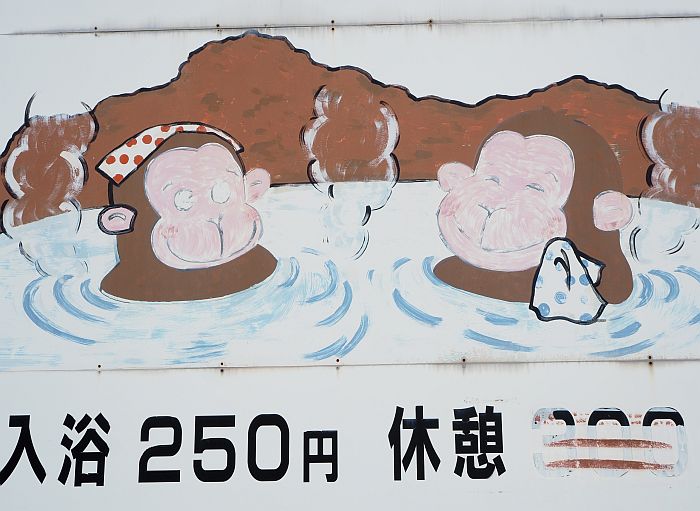
An Onsen is a spa, similar to the Jimjilbang in Korea. The only real difference is that you cannot stay overnight in one.
What is far more important, however, is that they are much cozier because they are frequently very tiny. Some Onsens are in the middle of the woods – in the open air.
Others are directly on a lake or at the seaside, and are only accesible when the tide is low. Some are free and others require an entry fee.
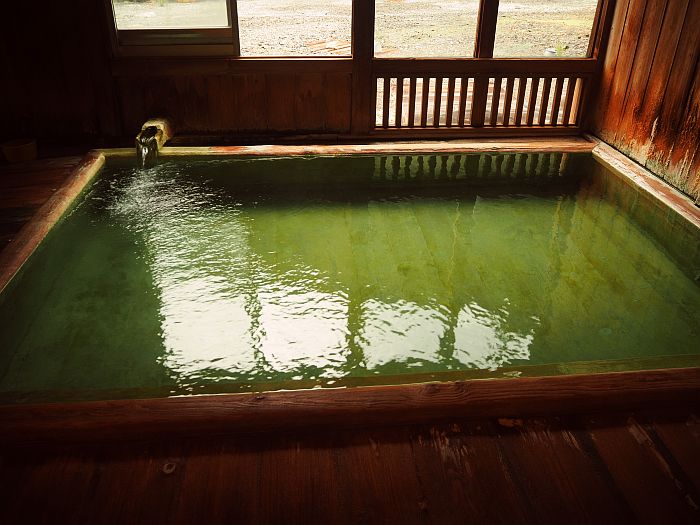
The large, luxury Onsens cost at least 500 Yen (3.50 Euros), which is still a bargain.
They have a sauna and several pools, and sometimes they even have a TV in the sauna. Shampoo and soap are always readily available and afterwards, you are sometimes served tea and allowed to sit for a while in a relaxation room.
But I honestly didn’t find them very appealing.
Most of all, I prefer the tiny Onsens where the pools are only a few square meters in size and have a nice homey atmosphere. Often these Onsens only cost about 200 Yen, or about 1.50 Euros. They are unquestionably the best medicine for the legs of an exhausted cyclist.
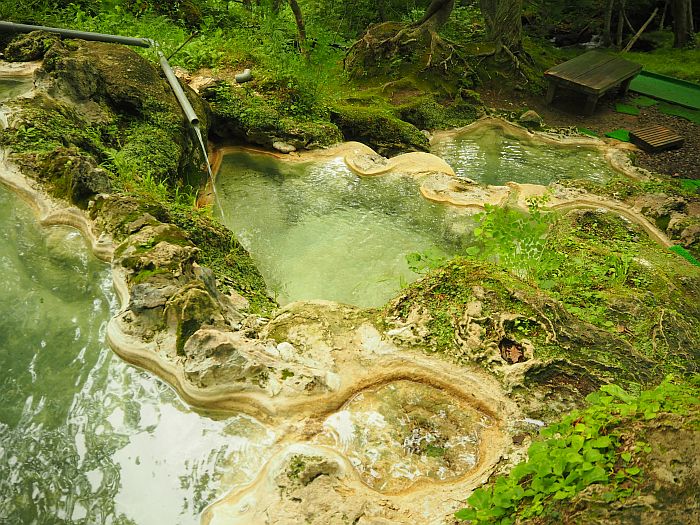
Frequently, an old lady sits in a tiny cashier’s office in a wooden house that smells of sulfur and the wooden floorboards creak and the doors squeak.
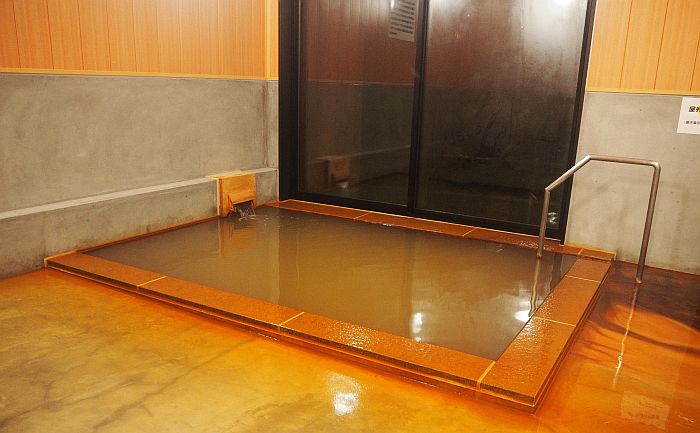 Generally, the men and women are separated, but there are also a few mixed Onsens.
Generally, the men and women are separated, but there are also a few mixed Onsens.
Like in Korea, the people wash themselves while sitting on stools, and if they are out-of-doors, they scoop the water with a plastic bowl out of the basin and wash themselves before getting into the water.
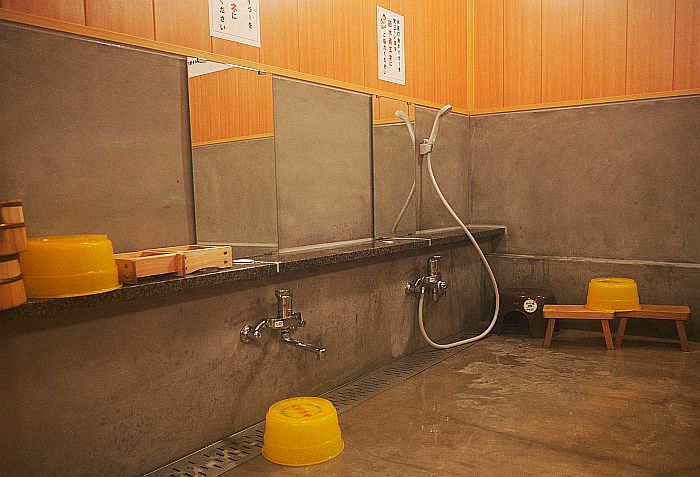
The water is sometimes brutally hot, and sometimes, it is a delightfully pleasant temperature. It can be sulfurous, salty, brown, white, clear, and odorless in all different variations.
Sometimes, it is really painful to enter the water because the temperature is almost unbearable.
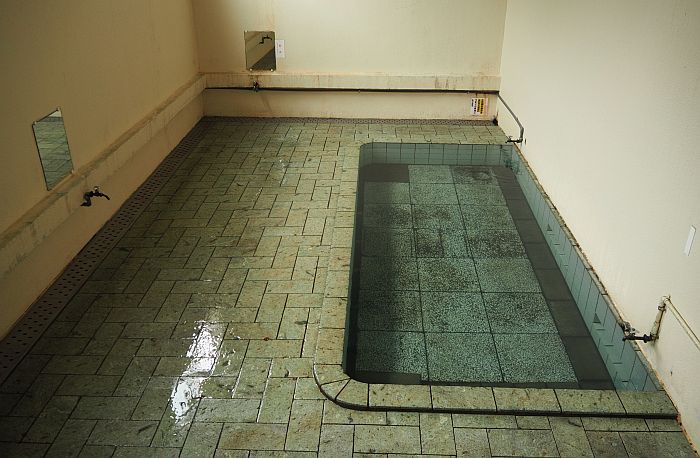
The Japanese are such pleasant people that, either because of charm or politeness, they would normally not say anything.
If they wanted to make someone aware of being wrong, they would do it in a very polite way.
And for that reason, it is truly enjoyable to be a cyclist underway in this country.
The Japanese celebrate their Onsens. I have the impression that they are relaxation for the body and the soul, and are primarily used by the Japanese to finally get some rest and distance from the pressure to perform.
But I would also conjecture that maybe some of the people have no private bathrooms in their homes and use the Onsen as their daily bathing place.
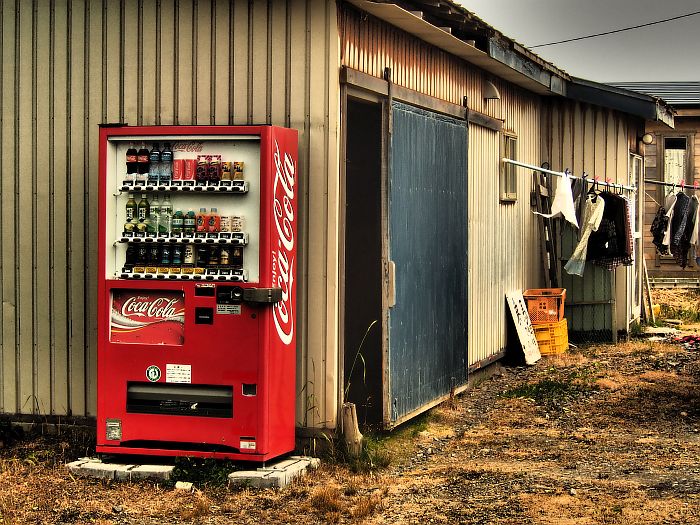
Hokkaido is very American. The houses are not really attractive or in any way, Asian. The villages are all very similar. And there is practically no historical atmosphere at all.
On every corner, there are the so-called convenience stores like 7-Eleven, Lawson and Seicomart. And to my big surprise, the people would rather buy their junk food in those places than in the small mom and pop shops where there is fresh food from the farm.

And now I will write a little bit about what I absolutely “do not like” at all in Japan – namely, the people leave their car engines running all the time just like the Americans.
People go shopping and leave the motor running. People eat or make telephone calls in their cars while the engine is running – not just for a few minutes, but for hours.
The drivers go into the 7-Eleven shops and read the comics and “soft-porn magazines” on the shelves while the motor in their car is left running outside.
Sometimes you can see the people parking on the side of the road, probably because they want to take their 10-minute power sleep, and of course, they leave their motor running the whole time.
Taxis wait at the taxi stands for hours and they leave their engines chugging away. You can hear the motor running in trucks and buses half the night while the drivers are sleeping.
Plastic – another pet peeve of mine. Yes, Japan is also full of plastic.
Everything, absolutely everything, is packed in plastic. There are no loose apples or onions; even some of the carrots are individually wrapped. Lunches, such as noodles with gravy, are wrapped and stored in the convenience store refrigerators and are then later warmed up in the microwave and eaten in the cars. Even in the supermarket, the snacks are packaged in plastic and placed
in the refrigerator.
At the checkout, everything is wrapped again in plastic.
I regret to say, the Japanese addiction to plastic is equally as bad as the Chinese. On the other hand, waste separation is exemplary, but I have to ask myself why they even have to produce so much garbage in the first place.
If you can find trash containers here, there is a separate trash can for each different type of waste. There is even a separate container for the plastic bottle caps.
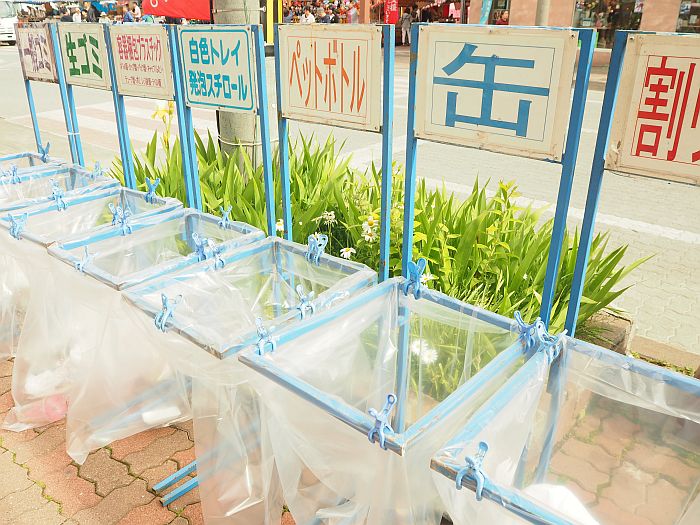
I find it absolutely impressive, that you almost never see trash on the street. Although, like in Korea, there are practically no bins to be found. It appears that the people always pack their trash with them and then dispose of it at home.
In convenience stores, however, the trash bins are overflowing. That seems to be the only place far and wide where you can find trash cans.
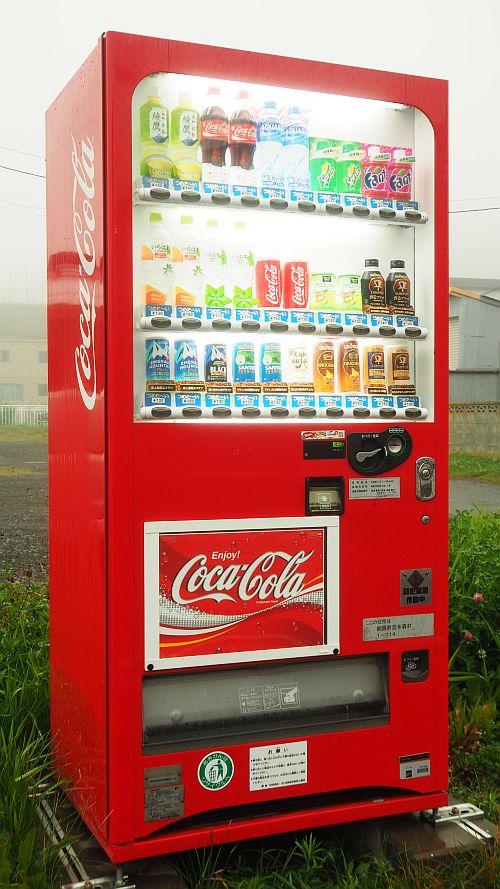
The machines stand in the blazing sun at 35°C and cool the drinks down to 5 degrees. There are so many different kinds of beverages that there are sometimes 5 to 10 machines standing all in a row.
There are also myriads of people who go camping on the island of Hokkaido and everything is made super easy for everyone.
I camped at a rest stop together with 8 Japanese cyclists under the roof of the rest area protected from the rain.
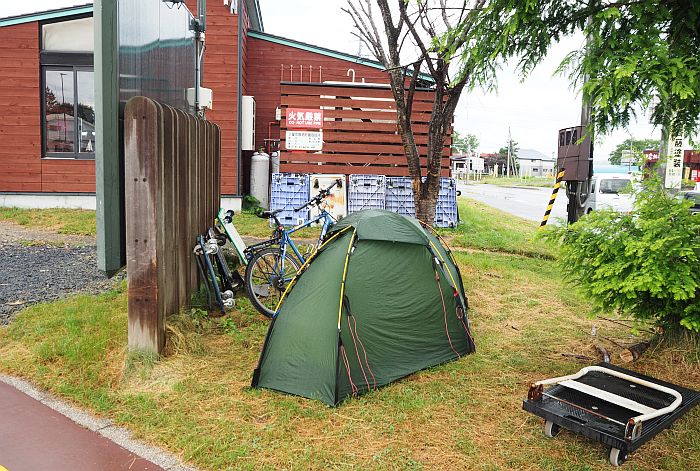
For motorcyclists and cyclists, there are so-called “Rider Houses.” Some of them are free and you can sleep, for instance, in an old railroad car and share it with fellow travelers; and the toilets are super luxurious.
The friendship between motorcyclists and cyclists is exemplary in Hokkaido. Everyone waves to each other and sometimes they even stop to chat with each other for a while.
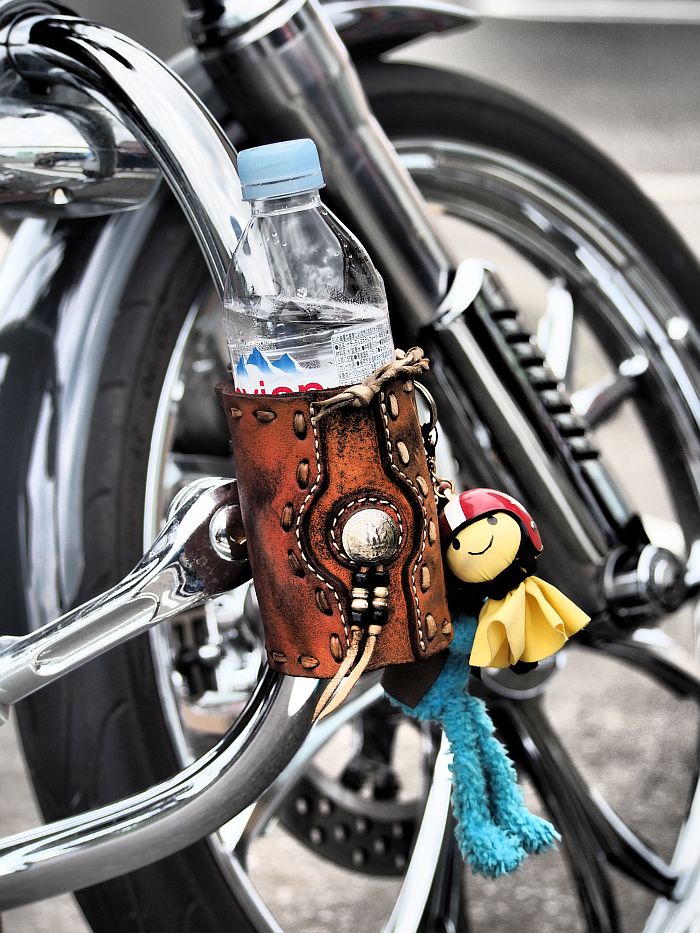
Here, a human being is treated like a human being. No matter where, no matter when, everyone is regarded with great respect. The artistry involved here appears to be giving the other person a pleasant feeling and offering as much consideration to the other person as possible.
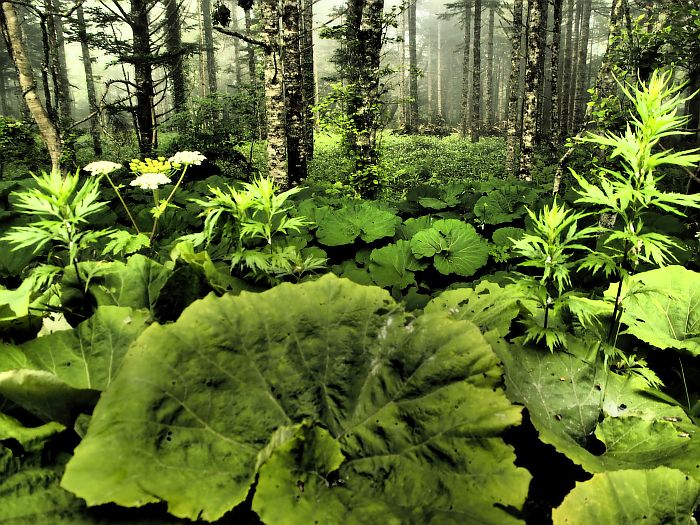
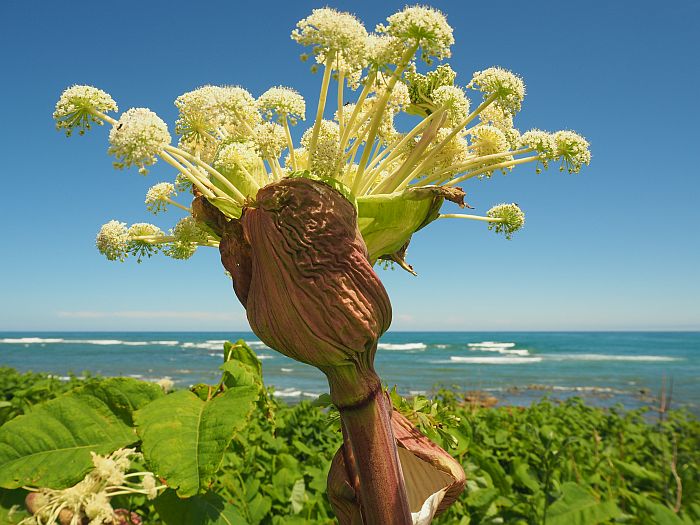
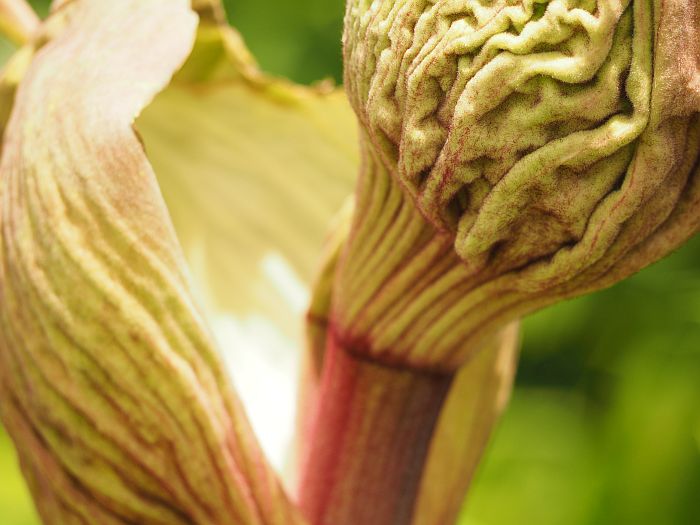
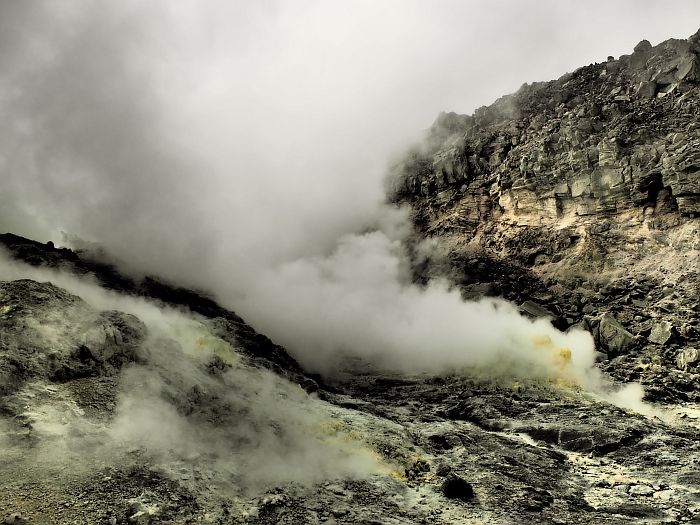
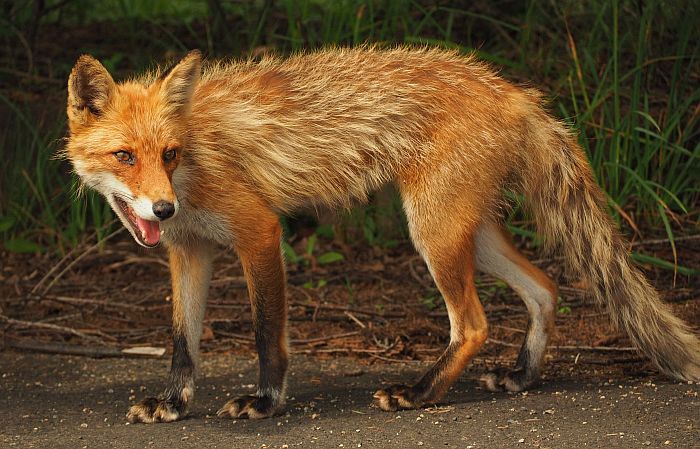
Shiretoko National Park is best known for its brown bears. I was toughened in Russia,
so I have to say, that I don’t fear the bears at all here. The people give me such a
pleasant feeling that, at no time have I ever experienced fear.
True to the motto, when people are so nice, then the bears must surely be equally nice.
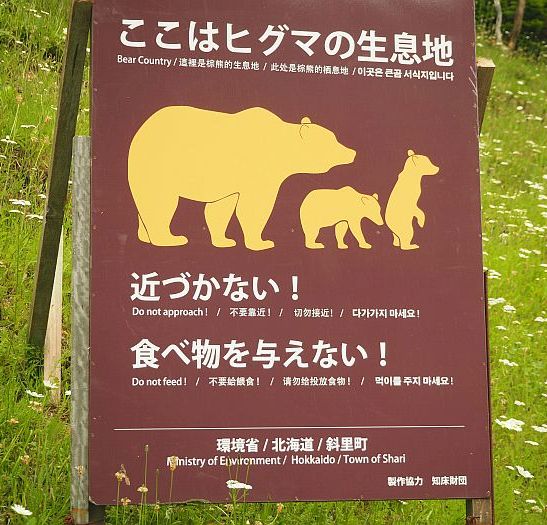
The hikers all have small bells hanging on their backpacks, so the bears will take notice
of them. Instead, I use my mp3 speakers and, unfortunately, I haven’t seen a bear yet.
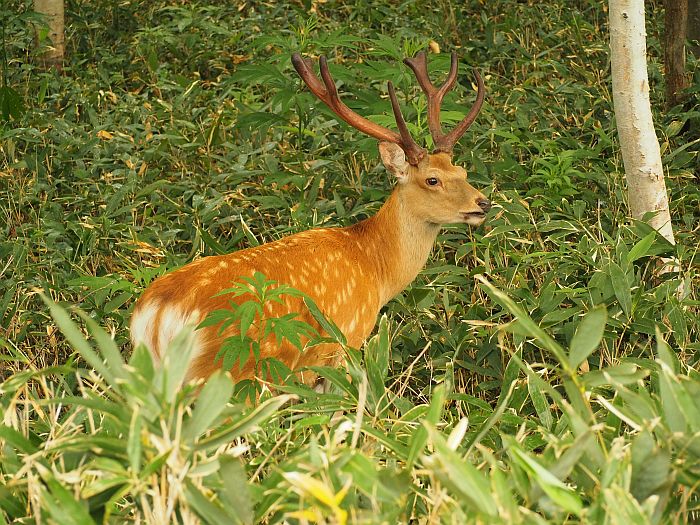
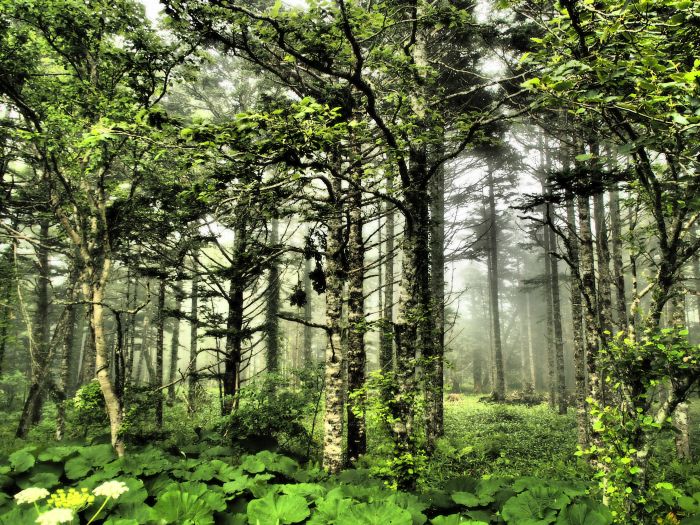
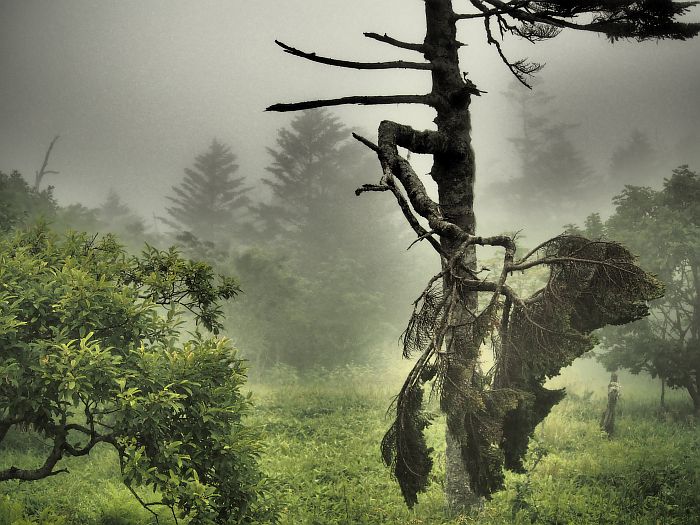
The forest is enchanting and is filled with a thick deciduous forest, which makes it
quite obvious how often it rains here. Unfortunately, the rain is really persistent,
but the temperature is pleasant and so it isn’t quite so tragic that it’s nearly always
raining when I’m on the road.
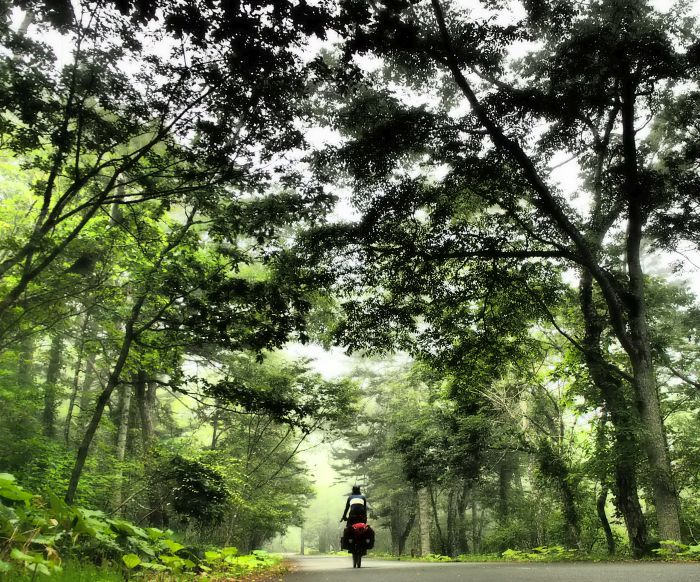
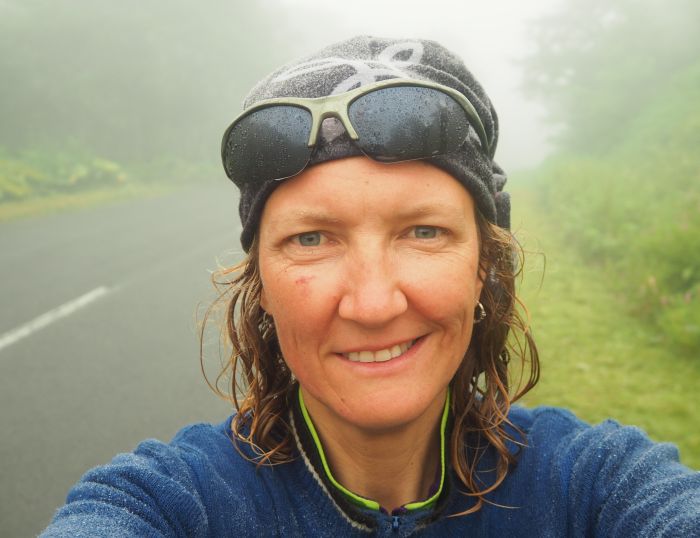
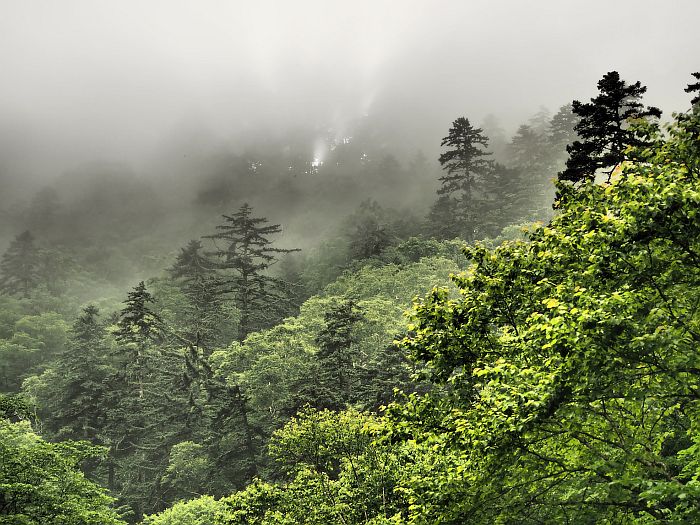
Unfortunately, enormous horseflies seem to accompany me everywhere I go again.
In the evening, there are also too many mosquitoes and they constantly use me
as a source for their evening meal.
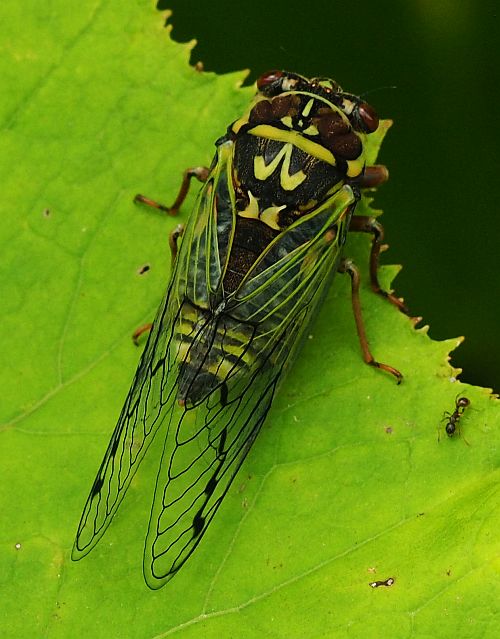
Hokkaido is extremely safe. I have never had to worry about my things. No one does
anything to anyone else here, and I can pitch my tent literally anywhere I like – even
in the city parks or on the side of the road.
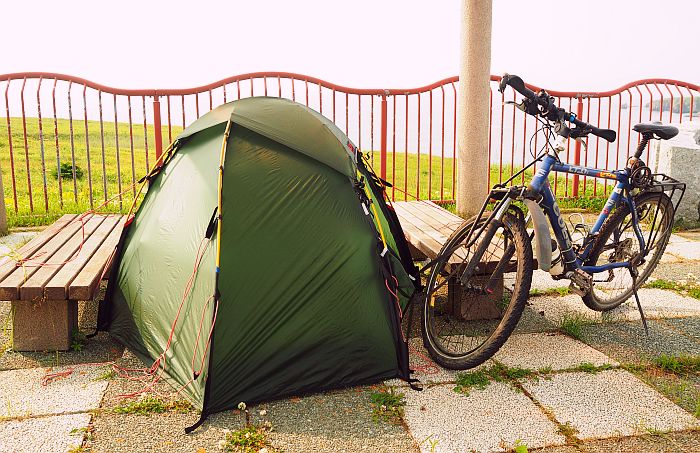
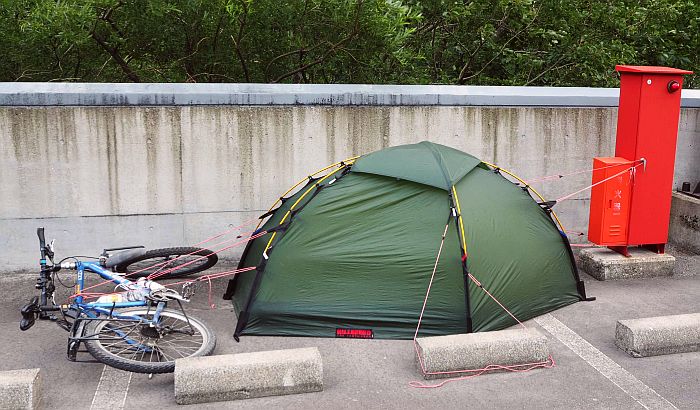
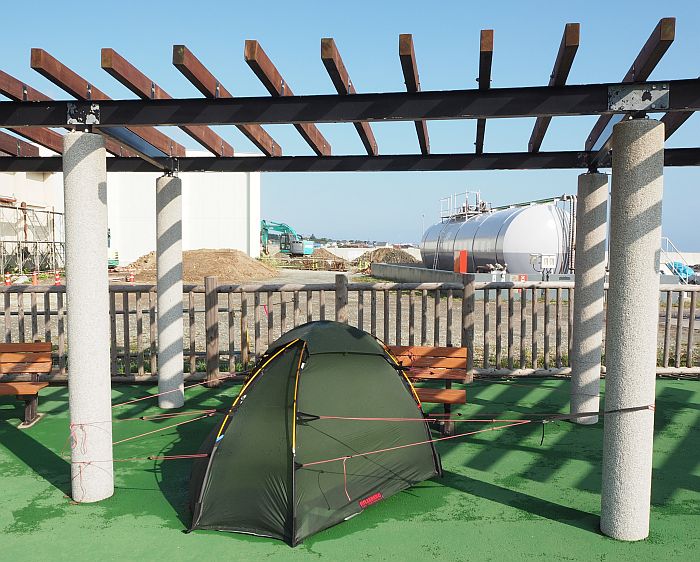
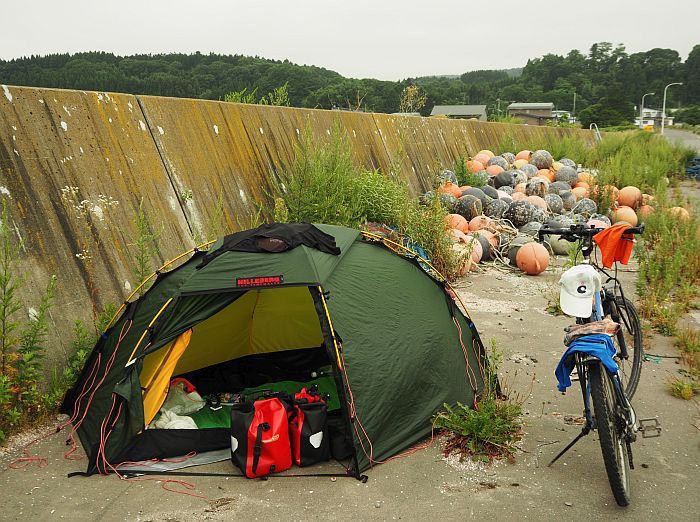
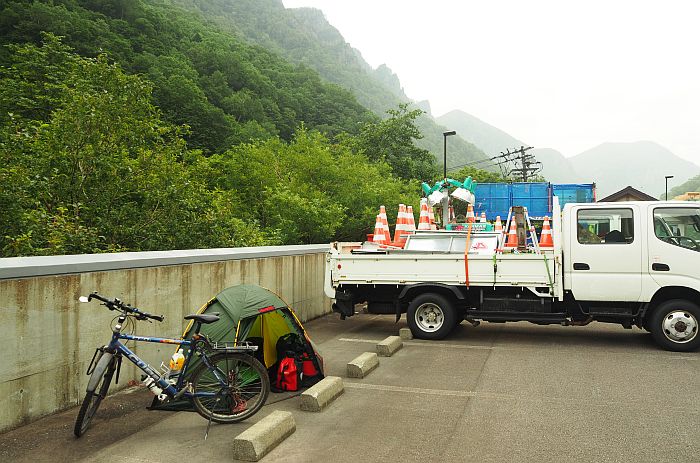
This too is a kind of freedom that is so important to me. I can casually decide
where I want to set up camp, so I can pitch my tent just anywhere when I get tired
of cycling. There are no restrictions.
Would you ever expect that from a highly regulated country like Japan?
Germany, “Doitz”, is particularly popular in Japan. And just about everyone I get into
a conversation with has been either to the Romantic Street, in Heidelberg, on the
Rhine River or in Munich in Germany.
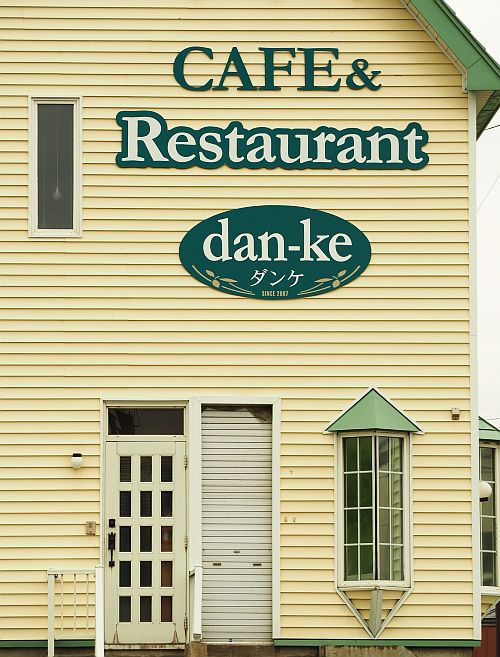

Some things are quite honestly a bit silly. For example, if you go into a building to go
to the toilet, and that can happen even at a campground, you have to first take off
your street shoes just inside the door, place them into a shoe cabinet, and then
put on house slippers that are provided there.

Wearing the house slippers, you walk to the bathroom and, leaving the slippers in front
of the bathroom door, you step into toilet slippers to enter the bathroom. When you come
out again, you step backwards into the house slippers thus leaving the toilet slippers
properly rotated for the next person to quickly slip into them from the other side
of the doorstep.
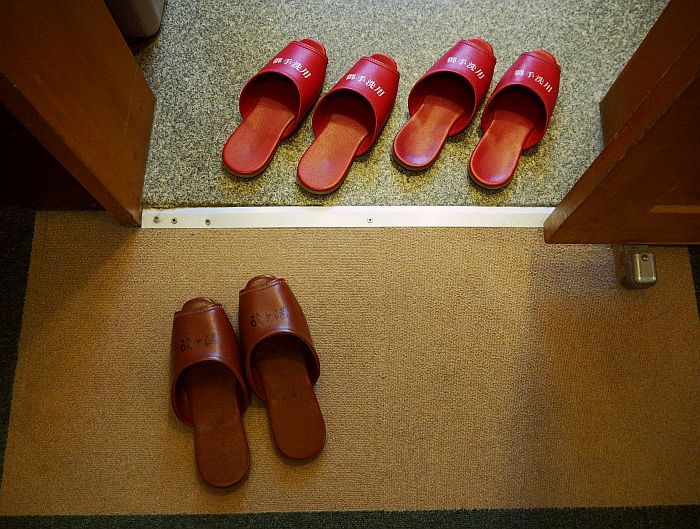
What I don’t quite understand about this practice are the alleged sanitary benefits.
One thing is clear, if any of the slippers are shared with someone who has athletes foot,
it is going to spread very rapidly.
Toilets are also something very special.
A German boy called his friend to wish him a happy birthday and took his cell phone
with him into the toilet explaining to the boy on the other end of the line exactly what
a Japanese toilet is actually like. Just like in Korea, the toilet seats are heated;
there are fountains that can be used to wash your bum; and you can play all kinds
of sounds while in the toilet and there are a lot of confusing buttons.
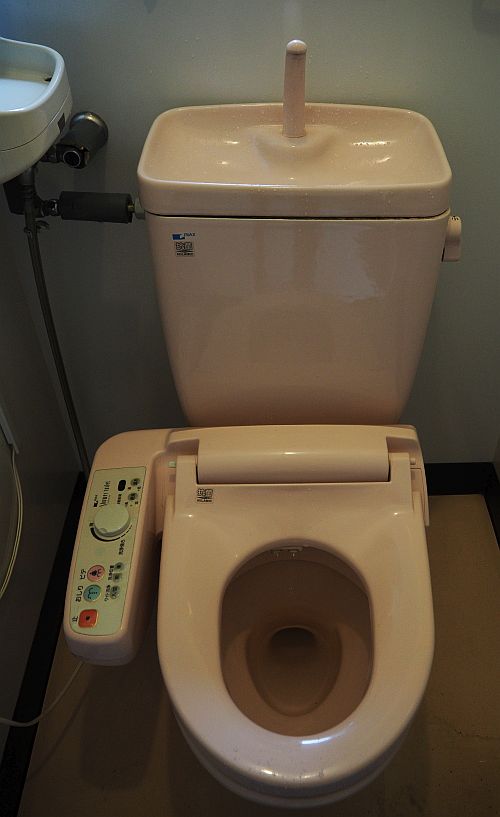
The two were just constantly laughing out loud; I also found it to be outrageously
useless and I was so happy that I could finally once again share in a conversation.
Often, the water taps are nifty. You never know whether you have to press the lever
upwards, downwards, or to the side or how the water is going to come out of the tap.
Every water faucet is a new experience.
I even accidentally pressed an alarm button once because I had no idea which button
to push to flush the toilet.
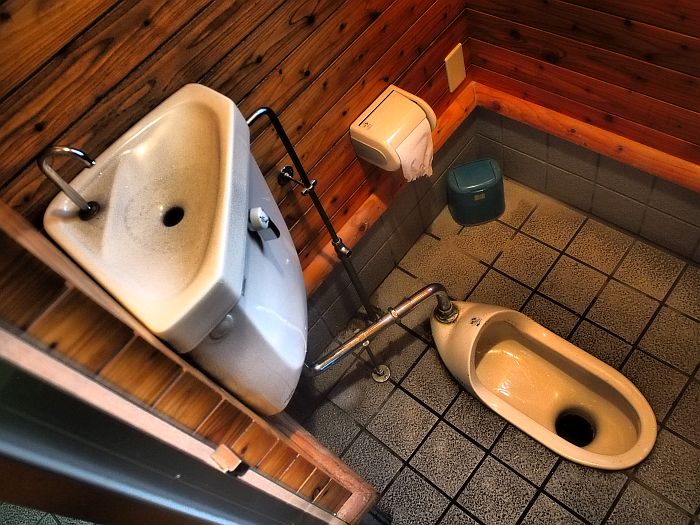
The first time I pressed the button to flush the toilet in a small shop, the water shot out of
a tap above the sink and suddenly, half of the toilet was underwater.
I understood later, however, that this is not such a bad idea, because immediately after
you use the toilet, you can wash your hands as the water fills the toilet bowl again.
That way you don’t need an extra sink.
Actually, I learned later that the toilet flushing mechanism in the little cafe was broken.
Sounds, melodies and speaker announcements are also very popular in Japan.
In principle, there is some kind of sound nearly everywhere. The same tune is played
over and over again in the supermarket, there are ringing tones to hear and I have
no idea what they actually mean.
There are vending machines that talk to you, alarm signals on the street, sirens and so on.
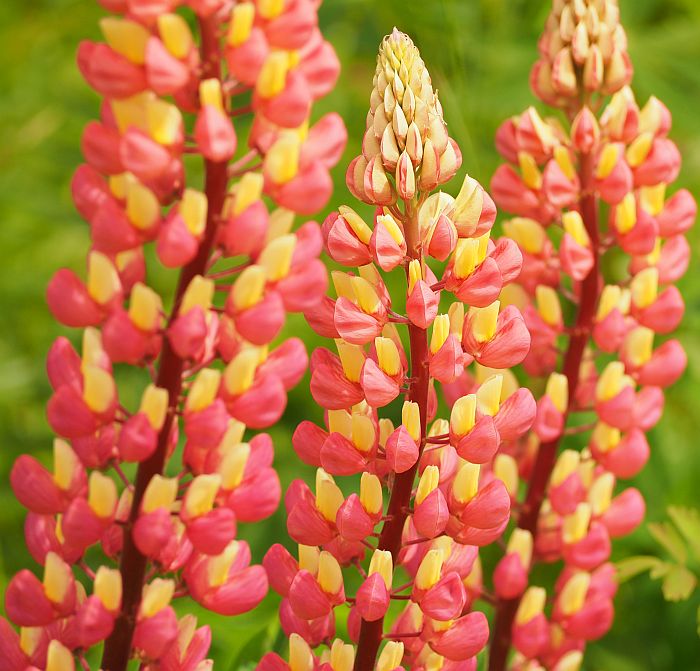
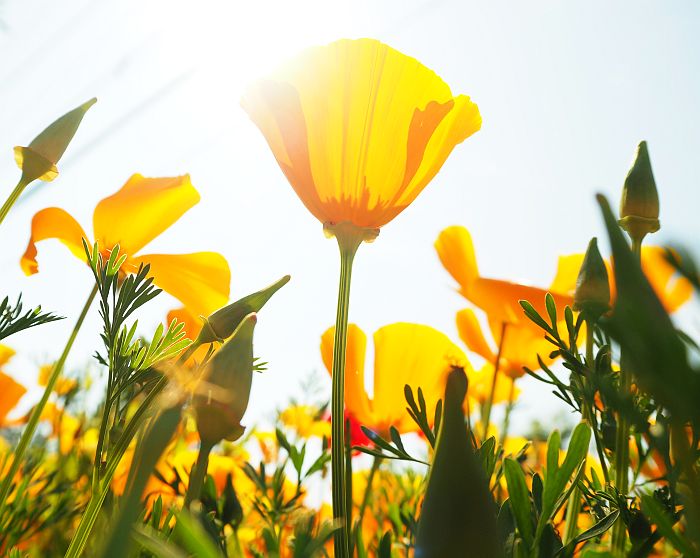
Nature on the other hand has been left as it is. It is actually possible to find areas in
nature that are entirely intact.
There is an incredible amount of land filled with forests, wonderful lakes, volcanoes
and few towns and villages. It is just perfect for any nature lover and a real
paradise for cyclists.
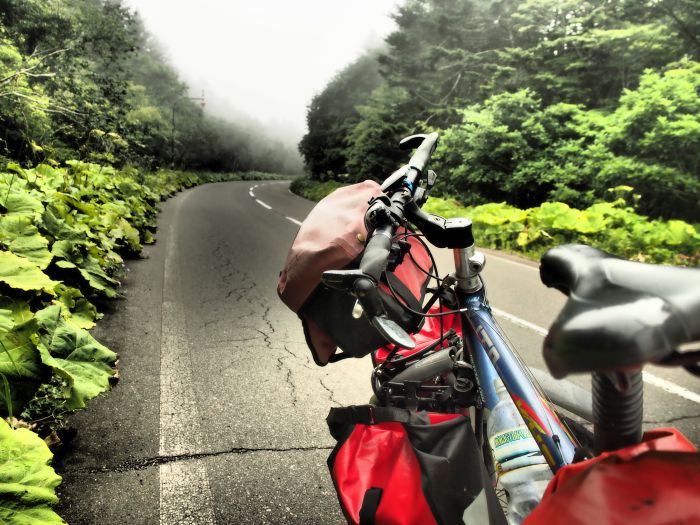
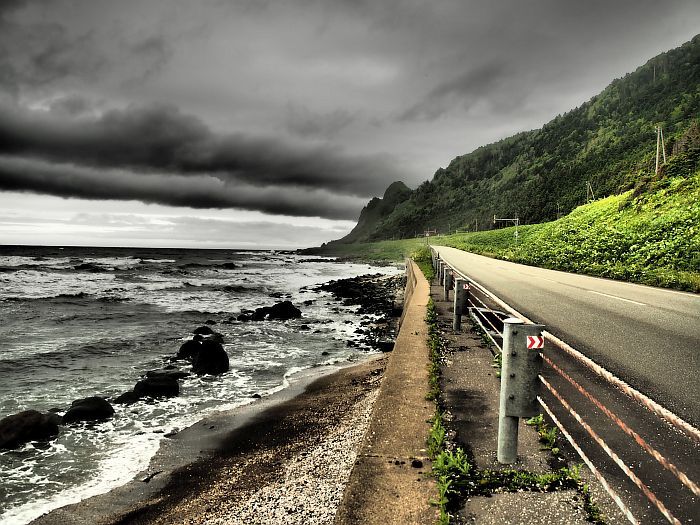
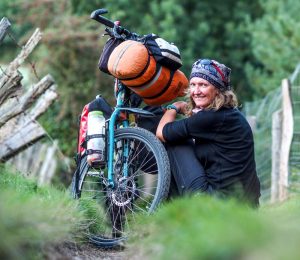


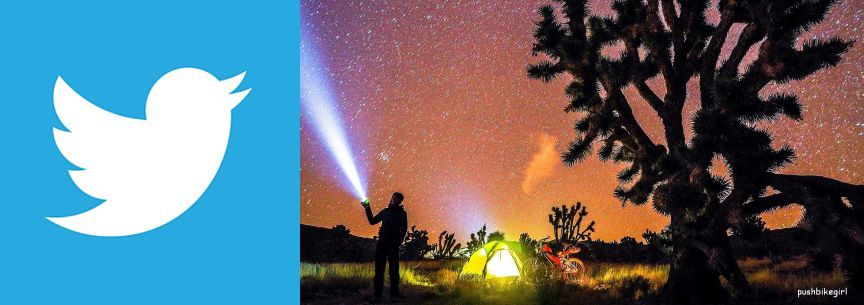

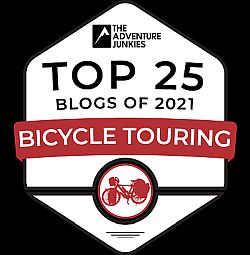
Your comments bring back memories of when I first cycled in Japan in 2011 also starting in Wakkanai (where the signs are not in Japanese and English, but rather Japanese and Russian!) but heading down the Japan Sea side rather than the other side (then down the Tohoku coast 6 months after the tsunami). I’d flown from the UK via Seoul to Sapporo and then a short low-level flight over that beautiful green jewel of an island up to Wakkanai. Seeing such a lovely lush green country from the plane, I was really itching to start what was my first bike trip. I also arrived at the beginning of September (I’m assuming from the blog date that’s when you started). Typhoon season was just starting (which I’d completely overlooked) and I spent several days in the empty campsite at Wakkanai looking at the rain before setting off.
The second or third day cycling I chose to camp pretty high up on a cliff just above an onsen. After a lengthy onsen session, I headed out to my perch with incredulous onsen staff looking on (at the stupid gaijin camping on a cliff in a typhoon) as I trudged up in the heavy wind and rain and suffered a similar experience to you, but worse as the wind pushed the top of my tent down to nose level so many times that eventually the “indestructible” MSR carbon pole snapped and punched a nasty hole through the flysheet. For the next five days – before I got to Sapporo and couchsurfed with an incredibly hospitable father and daughter for the time it took MSR to send replacemements – every day I had no idea wjhere I would sleep the night. The kami of accommodation always provided something.
Though Japan wasn’t new to me, prolonged distance cycling and Hokkaido were, and I fell in love with the beauty of its people and nature. Since that time, I’ve returned as often as I can to cycle in Japan, partly because I always feel so safe. I often think I’d like to do what you’re doing, but I’m a bit scared to be honest (I’m a 60-year old English guy whether that explains/mitigates/exaggerates my fear or not…). the thing about Japan is that feeling of safety, as well as the general kindness and ‘civilisation’ (in the best sense of the word) of its people (who are not, however, always angels and can be a bit snobbish). And rural Japan is lovely. And there’s the onsen, too of course, which I just LOVE.
Sorry to comment at such length, but your blog just reminded me so much of my experiences that first time in Hokkaido – the delicacy & kindness of the people, the wind, the rain, the nature, the animals, the motorcyclists, the rider houses, the empty roads… I’m not sure whether Japanese will be as welcoming after this coronavirus; I really hope they don’t become more xenophobic (and they can be…)
I’m very pleased to have discovered your blog & grateful to you for it. I hope this comment finds you well. Thank you and, as they say, safe travels.
Thanks Mark,
Very nice to hear from you and glad you liked my post and it was able to bring back some of your fond memories of Hokkaido!
All the best and thanks for sharing your story!
Heike
Thanks for the reply. Since the comment, I’ve read the rest of your Japan time and I see you are ‘up to speed’ on Japan and its complicated aspects.
Looking forward to reading your blog from the beginning.